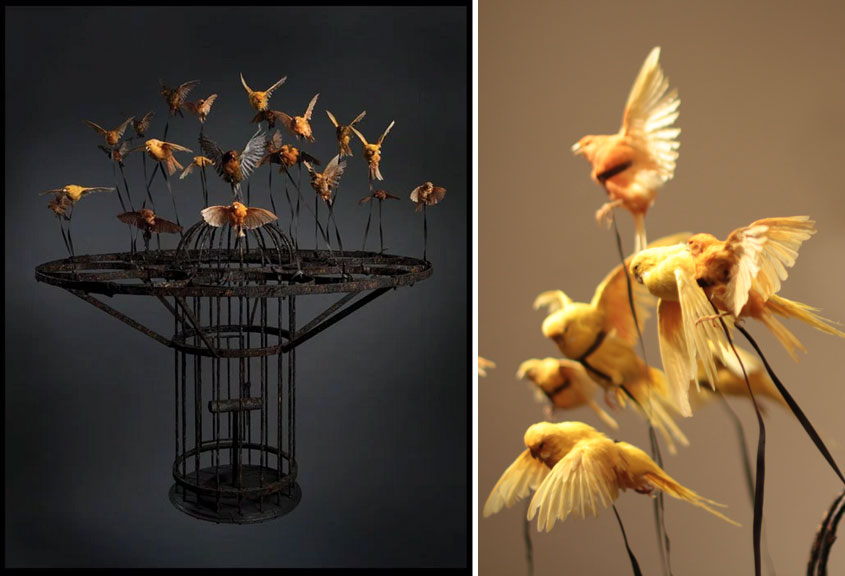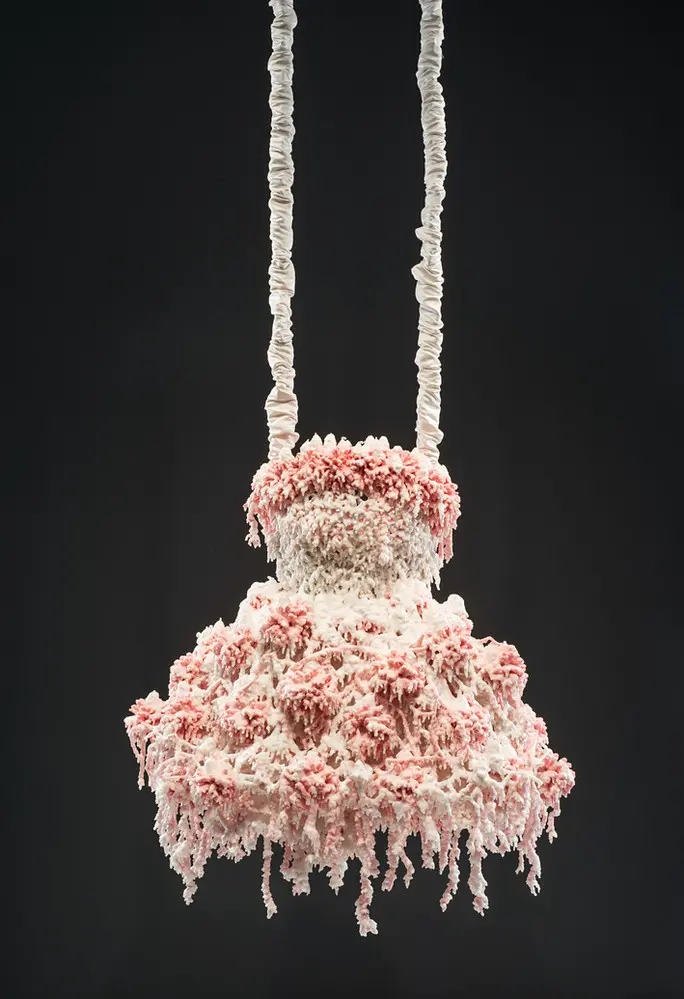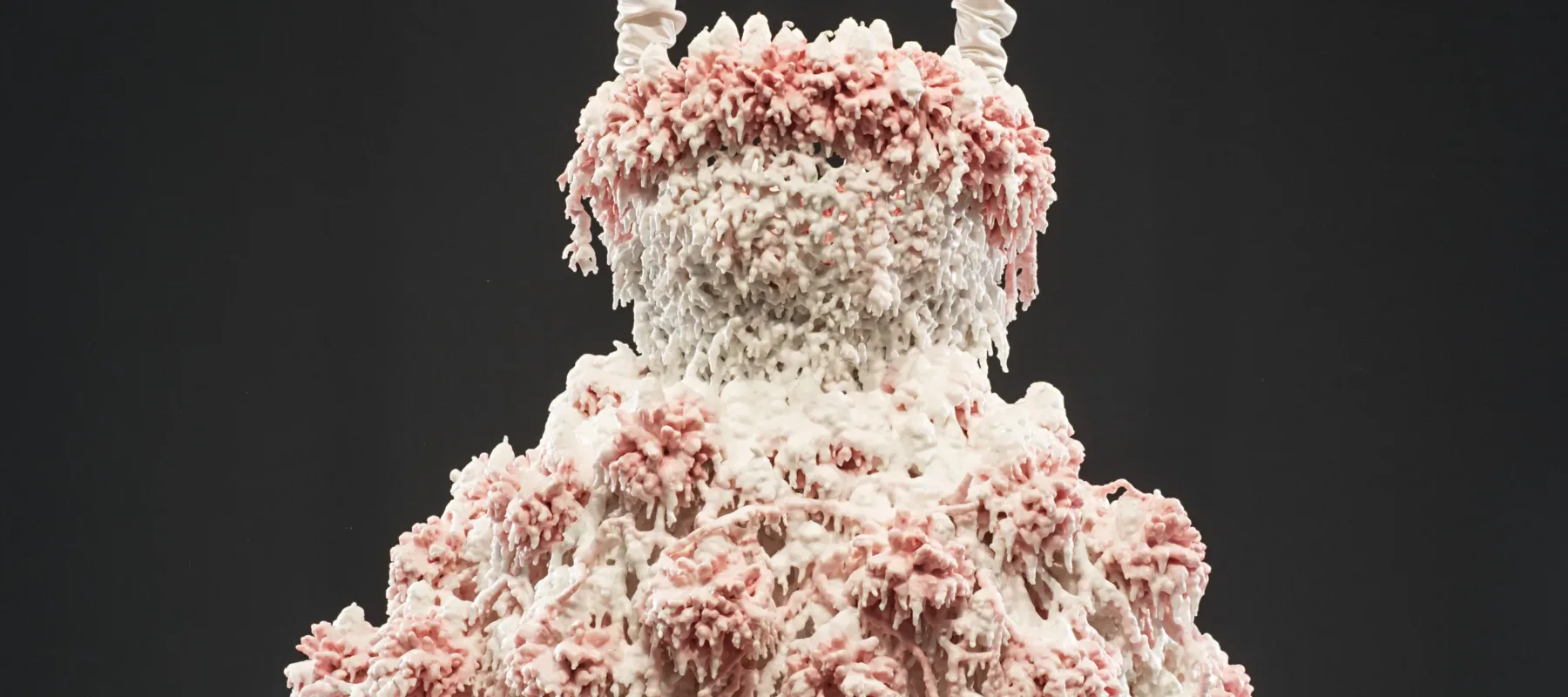Polly Morgan’s Systemic Inflammation is a striking artwork in Organic Matters—Women to Watch 2015. Featuring small yellow and orange birds rising from a tethered position atop a charred metal cage, this work exemplifies the way that the exhibition addresses modern society’s complex relationship with the environment.
Morgan spoke about her work during Member Day at the museum. A literature student, Morgan never intended to become an artist. Unsatisfied with decorative taxidermy options for her home, Morgan decided to make a work herself. She trained with a Scottish taxidermist and adopted the scientific process as an untapped contemporary art medium.

Morgan is absorbed by the idea that humans, “as earth-bound creatures,” constantly attempt to push the limits of flight. Her use of birds and focus on wings highlight her fascination. Morgan also draws heavily from Victorian imagery—as seen in her works containing large ornate cages and glass terrariums. Systemic Inflammation pays homage to a drawing of a Victorian flying machine. affixed with a delicate bouquet of birds and evocative of a rising phoenix.
The use of dead animals in art immediately alludes to themes of death—but Morgan’s objective is not fully focused on death. She sees the triumph of life and discusses how terrifying the fight for life can be versus the peaceful state of death.
Departing from smaller works like Still Birth (Red), Morgan attempted to “command more space, become less ornamental and more monumental.” Her focus became more about juxtaposition and finding new ways to view nature. Her most recent work creates abstract forms from the bodies of snakes—resulting in a surprising and new type of sculpture.

Another work in NMWA’s collection connects visually to Morgan’s art. Petah Coyne’s Untitled #781 is an immense wax sculpture—both incredibly foreboding and lush with excess. It seems to grow and decay before the viewer. The sugary white and pastel pink of the work do not immediately recall Coyne’s darker works. Untitled #781 is part of a series about the experience of being a woman. It references the beautiful and fanciful expectations Coyne had as a young girl. The work is both feminine and sexual in nature, reminiscent of a cake or a wedding dress. It is a work fit for a modern Marie Antoinette. Coyne’s art is influenced by literature, personal memories, Catholic theology, and baroque sculpture.
The macabre beauty of Coyne’s art brings a Victorian flair—similar to that found in Morgan’s art—to her incredibly modern oeuvre. Coyne changes her medium constantly, using taxidermy animals and dead fish in other works.
Petah Coyne and Polly Morgan are influenced by the art of Louise Bourgeois and Eva Hesse. Both artists bring forth otherworldly creations through extremely labor and time intensive processes. The results are stunning works of art which connect to nature and have a monumental presence.
Visit the museum to see Organic Matters—Women to Watch 2015 through September 13, 2015 and watch Polly Morgan’s gallery talk to learn more about the artist.
